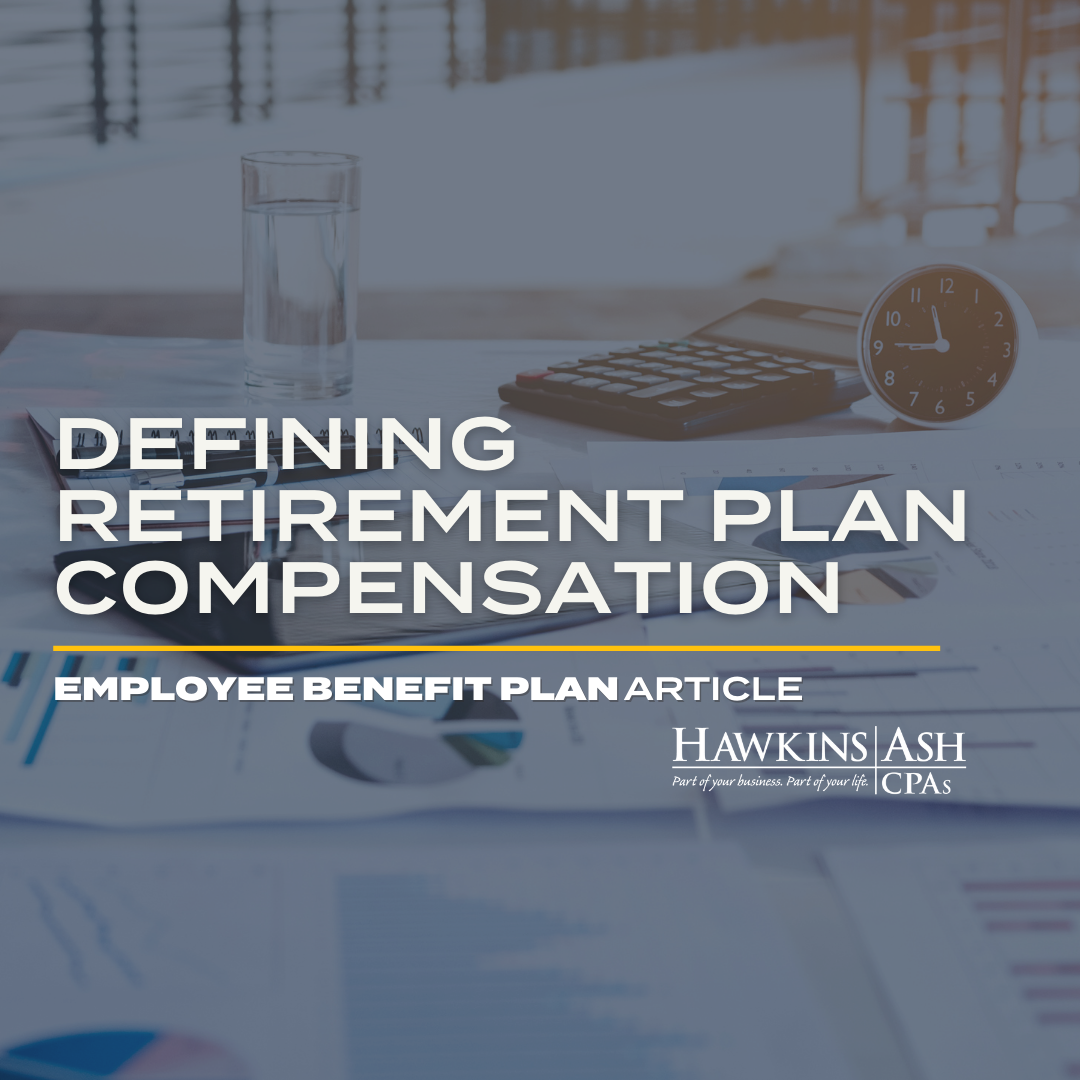When it comes to administering your retirement plan, determining compensation for each participant can be confusing. Compensation is routinely near the top of the list of plan operational failures reported by both the U.S. Department of Labor (DOL) and the Internal Revenue Service (IRS).
Determining proper compensation for each participant is crucial to proper administration of any qualified retirement plan. It is used to apply limits, conduct nondiscrimination testing, and determine tax deductions. Failure to properly report compensation can result in significant penalties up to and including plan disqualification.
Standard Definitions
Standard definitions of compensation cast a wide net in terms of what they include. Common standard definitions include simplified compensation, W-2 compensation, and withholding wages. These definitions are very similar but there are differences among them and the differences involve certain specific types of pay. Also remember; no matter how a plan defines compensation, the IRS sets a cap on the maximum pay that can be counted each year, and that limit is adjusted annually for inflation. The limit for 2018 is $275,000.
See this chart for additional guidance.
Plan Specific Exclusions
Your plan document may also include specific exclusions for certain types of compensation not already excluded from the standard definitions in the chart linked above. Note that if certain types of compensation are excluded it may trigger the necessity for additional nondiscrimination testing to be performed to ensure that non-highly compensated participants are not disproportionately affected. Below are just a few of the additional exclusions you may find in your plan document.
Pre-participation Compensation: Almost all plans have a waiting period before new employees become participants. This compensation is counted for testing as well as for calculating benefits under all of the standard definitions. If the goal is to exclude this compensation, it must be clearly defined in the plan document.
Bonuses, Commissions and Overtime: The default under the standard definition is that these items are includible in compensation (see linked above chart). However, these types of compensation are not necessarily regularly recurring, giving some companies the desire to exclude them for plan purposes. Make sure your plan document clearly states what your desired exclusions and inclusions are. For example, if your company issues more than one type of bonus such as a holiday bonus and a performance bonus, you may want only the holiday bonuses to be excluded. Stating “bonuses are excluded” in your plan document will make all bonuses excluded. Your plan document should specifically state “holiday bonuses” are excluded in order to bring about the desired result of excluding only the “holiday” bonus. Any other type of bonus would be included under the standard definitions unless additional language is added to your plan document.
Taxable Fringe Benefits: The default under the standard definition is that these items are includible in compensation (see linked above chart). To exclude taxable fringe benefits, your plan document would have to include separate language to do so. Like the example used for bonuses in the above paragraph; how your plan document is worded can determine whether the compensation item is included or excluded. Make sure your plan document directs you to the result you are desiring.
This is an area to review carefully for 2018. With the passing of the Tax Cuts and Jobs Act, changes were made to the taxation of certain fringe benefits. For example, employers are no longer allowed to pay or reimburse moving expenses on a tax-free basis. Thus they will now become includible under the standard definitions of compensation unless your plan document specifically includes an exclusion.
Mitigating Risk
In order to mitigate the risk of disqualification of a plan, it is important to understand how the IRS defines compensation for qualified retirement plans and to understand definitions as laid out in your plan document. Make sure your plan document is up-to-date, and review your payroll coding system to make sure it still agrees with the administering of your plan; taking into consideration any recent changes to tax law, changes to your plan document, or both.
If you have any questions about how compensation is defined in your plan, please contact your Hawkins Ash CPAs representative.





